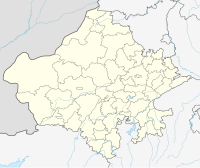Battle of Dewair (1606): Difference between revisions
Appearance
Content deleted Content added
mNo edit summary Tag: Reverted |
±Category:Battles involving the Rajputs; ±Category:Battles involving the Indian kingdoms; ±Category:Conflicts in 1606; ±Category:Conflicts in India using HotCat, see section on sorting keys Tag: Reverted |
||
| Line 58: | Line 58: | ||
[[Category:History of Rajasthan]] |
[[Category:History of Rajasthan]] |
||
[[Category:Mewar dynasty]] |
[[Category:Mewar dynasty]] |
||
[[Category:Battles involving the Rajputs]] |
[[Category:Battles involving the Rajputs|Dewair]] |
||
[[Category:Battles involving the Indian kingdoms]] |
[[Category:Battles involving the Indian kingdoms|Dewair]] |
||
[[Category:Conflicts in 1606]] |
[[Category:Conflicts in 1606|Dewair]] |
||
[[Category:Conflicts in India]] |
[[Category:Conflicts in India|Dewair]] |
||
Revision as of 17:24, 19 March 2022
| Battle Of Dewair (1606) | |||||||
|---|---|---|---|---|---|---|---|
| |||||||
| Belligerents | |||||||
| Kingdom of Mewar | Mughal Empire | ||||||
| Commanders and leaders | |||||||
| Amar Singh I |
Parviz Asaf Khan III Sultan Khan † | ||||||
| Strength | |||||||
| 15,000-18,000 heavy(stock) cavalry | 20,000 cavalry with Parviz and 12,000 cavalry with Asaf Khan III | ||||||
The Battle of Dewair (Dewar) was fought between Amar Singh I of Mewar and Mughal army led by Jahangir under Muhammad Parviz and Asaf Khan III. Shortly after his accession in 1606, Jahangir sent an army of 20,000 cavalry to attack Mewar. Parviz was only the figurative commander while in reality the de facto commander was Jahangir who directed Asaf Khan.[1] Amar led a hard fought battle to defend his territory,[2] and personally killed the Mughal commander Sultan Khan and his horse by spear.[3] Reportedly, Asaf Khan retreated from the battlefield.[3] resulting in Amar Singh's victory in the battle.[a][b][2]
See also
Notes
References
- ^ Eraly 2004, p. 259.
- ^ a b c Srivastava 1986, p. 269.
- ^ a b Rana 2005, p. 81.
- ^ Prasad 1930, p. 196.
Sources
- Eraly, Abraham (2004). The Mughal Throne: The Saga of India's Great Emperors. Orion Publishing Group.
- Prasad, Beni (1930). History of Jahangir (Second ed.). Allahabad: The Indian Press.
- Rana, Bhawan Singh (2005). Maharana Pratap. Diamond Pocket Books.
- Srivastava, Ashirbadi Lal (1986). The Mughul Empire (1526-1803) (8th ed.). Shiva Lal Agarwala & Company.
